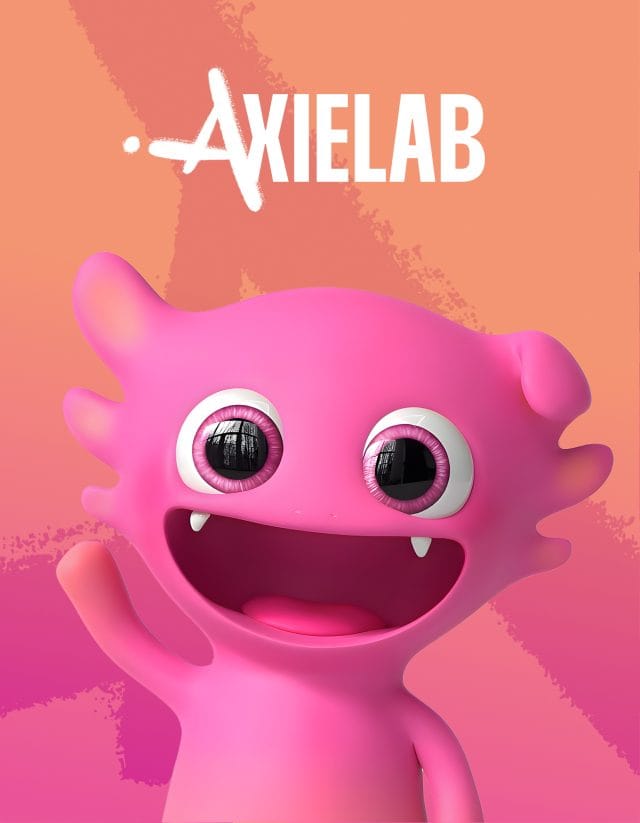A website in 2025 represents much more than a simple digital showcase: it is a pulsating, dynamic, and strategic hub, capable of orchestrating advanced interactions, leveraging complex data, and offering immersive, high-density content. This is not an idealized vision, nor a fleeting trend, but a necessary response to increasingly strict directives, the urgency of inclusive accessibility, and the continuous evolution of search engine indexing criteria.
The online environment no longer resembles that of a few years ago: user experience today is a complex synthesis where loading speed or attractive design play marginal roles compared to strategic data management, clarity in consents, and compliance with rigorous international standards.
The ability to precisely position content in search results is essential. Ignoring these variables, for those managing professional platforms, means falling behind. The most advanced web agencies of 2025 embrace integrated and scalable solutions, projected beyond the short term: they leverage Artificial Intelligence in all its forms, rely on established tools for granular data analysis, apply refined SEO strategies, and design experiences capable of blending the real with the virtual, thanks to immersive technologies such as augmented and virtual reality.
The essence of the website
Structural flexibility and dynamic content personalization
Today’s digital experience rejects rigid schemes or static solutions: content is shaped in real time, calibrated to preferences, browsing habits, and the micro-signals each user leaves behind. The layout is not a cage but a dynamic fabric, capable of offering timely resources – in-depth materials, video tutorials, operational guides, interactive comparison tools – with immediate accessibility, free of unnecessary friction.
The architectural foundation rests on agile frameworks combined with distributed databases that aggregate content from multiple sources, while maintaining consistency and fluidity. Personalization reaches levels that, until recently, seemed unattainable. Integrated machine learning functionalities allow systems to read and interpret behavioral patterns with surgical precision: contextual product suggestions, thematic correlations, problem-solving resources, even predicting the ideal moment to stimulate interaction.
This dynamic intertwines inseparably with an advanced approach to content marketing. It is no longer about isolated keywords, but about semantic architectures developed into clusters of related content, building organic networks of meaning that interact synergistically with search algorithms and users. The goal is clear: transform every visit into a calibrated, functional experience capable of anticipating latent needs.
From cookie management to consent mode
The end of opaque approaches to personal data
Privacy in 2025 is the beating heart of every design phase of a website. No longer a marginal detail, but a fundamental principle: data processing must be transparent, accessible, and aligned with both European regulations and global standards. Old cookie acceptance banners? Relics of the past. In their place, advanced interactive panels equipped with Consent Mode systems dynamically calibrate data collection based on user choices, eliminating any implicit pressure or coercion.
Transparency is not limited to form but becomes substance. Intuitive interfaces facilitate consultation of data management policies, subject to periodic reviews and integrated with updated security protocols. Automated audits ensure constant monitoring, while instant notifications highlight any relevant changes in cookie handling. Total clarity, which is not only a regulatory obligation but a strategic lever: search engines recognize, reward, and value the authenticity of a website that operates without opacity, favoring high-quality organic visibility.
Competent web agencies master the necessary solutions to manage this complex balance: advanced consent management platforms, effective audit tools, constantly updated plugins. The result? A browsing experience that respects the user in every aspect, ethically responsible and legally unassailable, where respect for privacy becomes a distinctive trait capable of making a difference.
Accessibility as a starting point
ADA compliance and universal interface design
Accessibility in 2025 is no longer reduced to a formal obligation or a checklist of directives: it is the imperative to make every website usable by anyone, regardless of physical, sensory, or cognitive abilities. Standards such as ADA (Americans with Disabilities Act) or WCAG (Web Content Accessibility Guidelines) are no longer footnotes but central pillars of digital design. Excluding accessibility today means not only exposing oneself to significant penalties but also giving up a substantial market share and compromising reputation.
The entire web ecosystem has transformed: multimedia elements, interactive modules, chatbots, internal search systems can no longer exist as solutions designed solely for those who see perfectly, use a mouse, or distinguish every color shade effortlessly. Content must be compatible with screen readers, text scalable for those needing magnification, color contrasts rigorously aligned with visibility standards. Even voice commands integrate seamlessly, offering a barrier-free browsing experience.
A competent web agency does not leave accessibility to chance: it conducts usability tests on diverse groups, builds accessible solutions from the ground up, and implements them with engineering precision. It is not about chasing trends or mechanically complying with regulations, but about ensuring total inclusion, preventing anyone from being excluded.
This approach, beyond being ethical and functional, translates into a technical advantage: search engine crawlers reward accessible sites, interpreting them as more reliable and deserving of higher ranking. Accessibility, therefore, is not only an obligation but a concrete opportunity that elevates the overall quality of the site and its digital relevance.
Advanced SEO
Moving beyond past techniques to conquer voice and semantic search
In 2025, search engine optimization is a fine balance within a layered semantic universe. Keywords, inserted mechanically or repeated without logic, are worthless: search engines interpret the real intent of the user, break down queries into logical clusters, and build, through the analysis of extensive textual corpora, a detailed map of content credibility and relevance.
A web agency no longer promises miraculous rankings on single terms. Instead, it designs elaborate information architectures capable of offering precise and contextual answers. The goal? To dominate voice searches with optimized and structured snippets, emerge in Knowledge Graphs as authoritative references, be recognized as a primary source on hyper-specific topics, and provide timely, accurate, and technically rich content.
This approach creates a virtuous cycle: original content, the result of in-depth analysis, targeted interviews, and trend monitoring, not only satisfies the user but captures their attention. More time spent on the page means more positive signals to search engines. No shortcuts, no tricks: authority is built through answers that anticipate implicit needs, integrate data from reliable sources, and offer fresh perspectives.
Consumption? Optimized for every device, with formats that prioritize speed, accessibility, and clarity. Artificial Intelligence is inserted as an essential tool, suggesting unexpected connections, elaborating advanced semantic correlations, and enriching navigation with dynamic, hyper-contextualized content. SEO is now a precision game: building value around what the user seeks, even before they know they want it.
The importance of code structure
Efficiency, security, and scalability
In 2025, code maintainability is an essential requirement: a website that ignores it risks collapsing under growing complexity. Modularity is now standard practice: front-end and back-end operate as autonomous entities, with well-defined responsibilities, connected through documented, secure API layers capable of fluidly interacting with third-party services.
Speed is the invisible pillar of this structure. Advanced caching systems work with global CDNs, optimizing distribution and recognizing traffic patterns to serve static content with almost imperceptible response times. Code follows strict standards, never left to chance: it undergoes continuous automated testing, precise versioning, and is designed to scale on elastic cloud infrastructures. Architectural solutions are built to handle sudden traffic spikes without ever degrading user experience.
It’s no longer just about looking functional or aesthetically pleasing. A slow website inevitably loses positions in SERPs, but more importantly undermines the perception of reliability and professionalism of the brand. Solidity becomes an invisible asset to the end user, but with tangible impact: lightning-fast loading, smooth transitions, frictionless interactions.
The most advanced web agencies today don’t just write and release code: they constantly monitor it, apply timely security patches, conduct periodic audits, and integrate Intrusion Detection systems to detect suspicious activity. Sandboxing isolates vulnerable components, preventing a flaw from compromising the entire ecosystem. It’s silent, almost imperceptible work, but essential. The underlying infrastructure is invisible, yes, but it shapes every aspect of perceived quality: stability, speed, security. The difference between a forgettable digital experience and one built to last.
Artificial intelligence and conversational services as a consolidated standard
The shift from traditional interaction to AI-driven interaction has been progressive but inevitable. In 2025, a modern website no longer hosts simple chatbots, but integrates true intelligent virtual assistants, capable of deciphering not only direct requests but also subtle nuances of natural language. These are not superficial or preconfigured tools: they are dynamic systems, powered by advanced language models trained on vast textual datasets, connected to external databases to generate detailed, contextual, almost human responses.
These assistants go beyond support functions: they guide users through navigation, resolve product questions, simplify complex procedures, and steer decisions with surgical precision. A competent web agency doesn’t just install standard solutions: it customizes and trains them on specific domains, transforming each chatbot into a unique interface perfectly aligned with the brand.
This adaptive capacity doesn’t go unnoticed by search engines. If a site demonstrates accurate, reliable, and proactive responses, its authority grows, and with it its organic ranking. But AI doesn’t stop at user assistance: it’s everywhere. It automatically optimizes images, generates personalized interactive videos, suggests interface iterations based on real-time user behavior, anticipating needs and friction points.
The website of 2025 thus becomes a cognitive platform, agile and intuitive. It converses with the user, understands them, predicts their next steps without being intrusive. Every click becomes a conversation. Every interaction, an opportunity to improve the overall experience.
The balance between aesthetics and functionality
Augmented reality, VR, and interactive content
In 2025, the online experience goes far beyond static text and images. The fusion between physical and digital is real, tangible: a website becomes a bridge to immersive dimensions. Augmented reality content, accessible directly from smartphones, transforms products and environments into tangible experiences; virtual tours allow exploration of spaces in 360 degrees; 3D objects can be rotated, enlarged, analyzed with surprising detail. Navigation evolves: no longer a linear sequence of clicks, but an exploratory journey where the user interacts, participates, and builds their own digital path.
This transformation is not merely aesthetic. Search engines reward interactivity and immersion because they satisfy users on multiple levels: informational, visual, and experiential. Positive signals generated by deep engagement directly impact visibility and organic ranking. But there is rigor behind innovation: a cutting-edge web agency doesn’t just experiment. It integrates advanced APIs for 3D visualization, synchronizes dynamic content with IoT sensors to provide real-time data, and creates scenarios that blend design, technology, and interactive storytelling.
Balance, however, is crucial. The immersive experience cannot suffocate the clarity of informational content. It’s not a show for its own sake, but a combination of functionality and aesthetics, where every visual element serves to improve usability, capture attention without distraction. Visitors don’t just stay engaged, they return because the site becomes a narrative space, a place where useful information intertwines with a fluid, memorable sensory experience. Not a technological luxury, but a consolidated expectation: in 2025, innovation is no longer an extra, it’s the norm.
Regulatory push, responsibility, and transparency
A new paradigm of online reputation
In 2025, a website’s reputation is no longer measured solely by its technical performance: it’s a balance between speed, transparency, and content reliability. Accuracy of information, clarity of sources, consistency between what is promised and what is actually delivered define perceived value. In an increasingly strict regulatory context – from data processing to accessibility, from advertising transparency to sponsored content management – any ambiguity is a vulnerability. Shortcuts don’t work: masking, omitting, or manipulating is no longer a calculable risk, but a fatal mistake.
A quality web agency knows transparency is the new standard. Users must be able to trace the origin of information, understand a product’s supply chain, evaluate the context of offered services. No tricks, no grey areas. This clarity is not only an ethical choice, but a strategic advantage. Search engines identify, classify, and reward credibility: a website that demonstrates reliability ranks higher, recognized as an authoritative and trustworthy resource.
Consequences for those who violate these principles are severe. Penalties don’t stop at SERP demotion: they can mean exclusion from digital payment platforms, inability to secure partnerships with major players, and above all, loss of trust from more aware users. In 2025, the digital ecosystem is ruthless with opacity and rewards those who respect clarity, fairness, and integrity: essential pillars for building a website that not only works, but endures.
Integration with external systems and interoperability
Open ecosystems for a connected web
In 2025, a website no longer exists as an isolated entity: it is a connected node in a complex digital ecosystem. Services, providers, technology partners, marketplaces, social channels, and distribution platforms converge into a single integrated network where interoperability becomes imperative. Corporate CRMs, global payment gateways, logistics systems for order tracking, and advanced real-time data analysis tools must fluidly interact with the site, creating a seamless, frictionless user experience.
Integration is strategic: an efficient website doesn’t just offer content, it connects the user to concrete solutions, facilitating purchasing processes, supporting personalization, and encouraging loyalty. Standardized APIs, modular interfaces, and advanced security protocols such as OAuth and SSO ensure reliable and secure connections, while the final experience remains transparent, fast, and intuitive.
The result is a platform that not only satisfies but anticipates expectations: simplified navigation paths, quick payments, constantly updated data, and solutions accessible with a single click. The absence of friction naturally improves time spent on the site, increases conversion rates, and sends clear signals to ranking algorithms. Search engines recognize the value of a solid infrastructure and reward platforms capable of offering not only content, but connections: a system where every component interacts, building a fluid and interconnected experience that transforms user interaction into a lasting relationship.
Evolutionary continuity
2025 does not mark a final milestone in digital development, but rather a point of transition toward a more integrated, ethical, accessible, and intelligent web. The relevance of a website today is not guaranteed by an isolated effort but by a continuous process: constant updates, anticipation of regulatory changes, performance optimization, and enhancement of the user experience with meaningful and functional content.
A web agency in 2025 no longer simply assembles static pages: it designs complex, sustainable, and constantly evolving digital ecosystems. Every component is designed with a clear purpose: SEO optimization is not a trick but a refined strategy, cookie management is a transparent and functional act, accessibility is not an optional add-on but a foundational requirement, and artificial intelligence is not a luxury, but an accelerator capable of predicting, adapting, and improving user interaction.
There is no definitive endpoint. It is a continuous cycle of work, where every detail – from code structure to visual experience – contributes to creating an engaging, transparent, and dynamic user experience. The ability to adapt, implement global standards, and integrate advanced technologies determines the solidity and longevity of a digital project.
The horizon remains open: innovations in the coming years will require responsiveness and vision, but those who have built solid foundations, updated architecture, and adopted key tools are already prepared to face the digital future. Complexity is no longer an obstacle: it is the hallmark of a mature, robust, and relevant website.
Being visible, appreciated, and competitive in 2025 is not a coincidence: it is the result of continuous evolution and constant research that must involve every stakeholder, from the client to the agency to each professional engaged.










